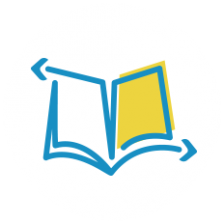Children with special needs can often benefit from a number of therapies and, generally, the sooner they receive treatment, the better the outcomes will be. But, how do you know if a child needs help? The Individuals with Disabilities Education Act (IDEA) requires each state to implement early identification policies to locate and refer children who may have a disability to that state’s early intervention (EI) program. Although IDEA is a federal law, each state sets its own EI policies and implements its own programs, much like Medicaid. Not all states will call it early intervention or EI, but states generally use similar terms meaning early identification and service for children with disabilities. While certain elements of EI remain consistent between the states, parents and educators should contact their state’s education agency to learn about state-specific policies and procedures.
Components of the Child Find Program
There are two methods for identifying and referring a child to EI. The first is a referral, usually by an educator or a parent. The second is the Child Find program. Mandated by IDEA, Child Find continuously searches for and evaluates children who may have a disability with the use of Child Find activities, which can vary widely from school district to school district. For example, one district might hold periodic conferences to train staff on policies, while another may hold playgroups, during which parents are asked to complete a developmental milestone questionnaire.
At least seven main elements are included in a Child Find program:
- Definition of Target Population: The state defines the criteria that determine which children are eligible for help. Some states expand the target population to include at-risk children, not just those who have disabilities or developmental delays.
- Public Awareness: The state raises public awareness about children who need help and the services available to them, targeting parents, caregivers, educators, school staff, physicians and others.
- Referral and Intake: A child is referred for services; specific procedures vary, depending on the state.
- Screening and Identification: The child is screened for possible disabilities or developmental delays.
- Eligibility Determination: Results of the screening are compared to the state’s eligibility guidelines, which must be consistent with federal regulations.
- Tracking: The state tracks and follows up with children who are receiving services.
- Interagency Coordination: Some states have multiple agencies that share responsibilities mandated by IDEA. Resources must be coordinated to ensure availability of services.
How the Child Find Program Works
Public awareness and professional training are critical for successful Child Find programs. For example, Mrs. Jones is a teacher at Acme Preschool. She notices that Johnny rarely makes eye contact, does not respond to his name and speaks infrequently. From her participation in Child Find activities, she recognizes that these signs indicate possible autism spectrum disorder (ASD). Mrs. Jones follows her state’s Child Find policies for notifying Johnny’s parents that he is being referred for screening for a possible disability. Once Johnny’s parents provide their consent for his evaluation, it must be completed within the state-specified time frame.
The referral of a child can sometimes be a delicate situation. Parents may be less than receptive to the idea that their child might have a disability. However, it’s always best for the teacher to follow Child Find policies, regardless of how the parents may respond. Once notified of the referral, the parents do have the legal right to refuse evaluation and services. Furthermore, an evaluation can bring peace of mind: the evaluation team might conclude that the child does not have a disability, or if he or she does, that needed help is readily available.
Parents and educators who are unsure of their state’s policies and eligibility criteria can contact their state’s education agency and/or their school district.






